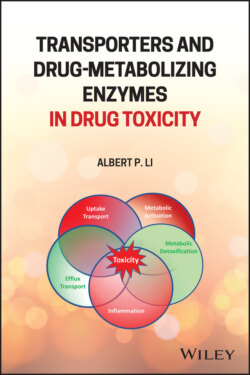Читать книгу Transporters and Drug-Metabolizing Enzymes in Drug Toxicity - Albert P. Li - Страница 83
3.10.1 Drug Metabolism and Toxicity
ОглавлениеToxic metabolite formation: In vitro results suggest that metabolism of tacrine, mainly by CYP1A2 [173], to highly reactive metabolites is a plausible mechanism of its hepatotoxicity. Incubation of tacrine with human liver microsomes has been reported to lead to the formation of mono‐ and dihydroxylated metabolites. Oxidative metabolism to hydroxylated metabolites appeared to involve highly reactive quinone methides that form covalent adducts with macromolecules, leading to hepatotoxicity. This hypothesis was further substantiated by the attenuation of protein binding by tacrine metabolites via supplementation of reduced L‐GSH to human liver microsomes [174–176].
Species differences in metabolism: In vivo [177] and in vitro [178] evaluation of metabolite profiles showed similar metabolite profiles but apparent quantitative differences in tacrine metabolism. A key observation is that human liver microsomes formed the highest levels of reactive metabolites, followed by dog liver microsomes (intermediate) and rat liver microsomes (lowest) [178].
